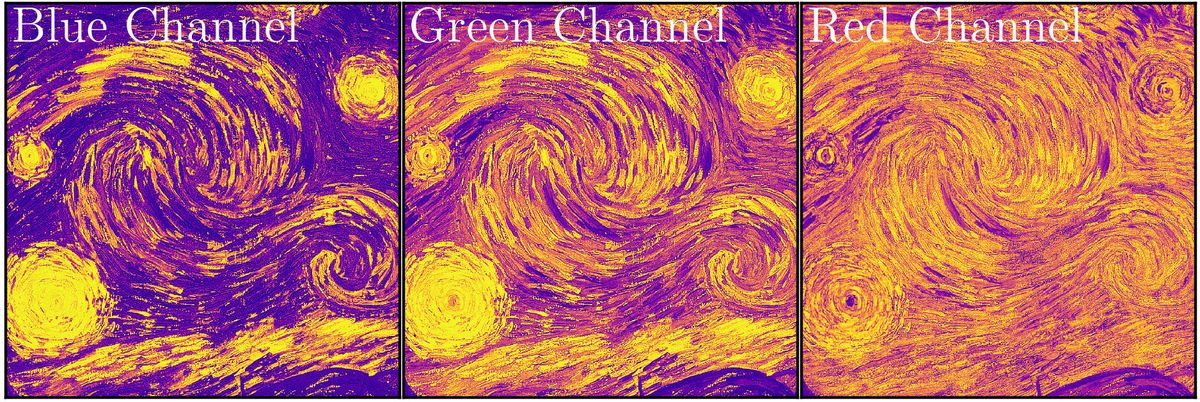The hidden science swirling in ‘The Starry Night’

Two decades ago, a pair of physicists stood in a museum in Madrid contemplating the work of the post-impressionist painter Vincent van Gogh.
One word kept popping up to describe the artist’s work and life: turbulent.
One physicist turned to the other to ask: Can the turbulence in van Gogh’s paintings be quantified?
A new controversy in physics was born.
Turbulence is all around us.
It is found in the whirls in the atmosphere that make a plane ride bumpy, the eddies that churn the ocean, the chaotic churning of gas clouds that help birth new stars.
But describing turbulence at a mathematical level is one of the hardest problems in science.
Turbulence links together the motion of fluids at different scales of a system, feeding energy from large-scale swirls to smaller ones, as a 1922 verse by English mathematician and physicist Lewis Fry Richardson puts it:
“Big whirls have little whirls that feed on their velocity, and little whirls have lesser whirls and so on to viscosity.”
In statistical terms, this looks a bit different.
In 1941, Soviet mathematician Andrey N. Kolmogorov developed a statistical theory of turbulence.
Kolmogorov’s “scaling law” describes how energy is distributed across different scales in a turbulent flow. To measure it in a static painting, researchers had to devise a method to measure its flow, a problem that held them back for a year. After admiring the emotional turbulence in the paintings at the museum, physicist José Luis Aragón at the National Autonomous University of Mexico and his colleague Manuel Torres at the Spanish National Research Council began to search for mathematical turbulence in a few of van Gogh’s paintings by examining differences in the luminance, or brightness, of pixels separated by a given distance.
They found that “The Starry Night” was turbulent, and not just by artistic standards.
A decade later, astrophysicist James Beattie analyzed the variations in luminance in a patch in the middle portion of the painting. He broke the square down into three color channels for analysis. He found that van Gogh’s swirls and vortexes followed the statistical fluctuations found in a different flavor of turbulence that gives birth to the real starry night: supersonic turbulence.
Beattie is an astrophysicist at Princeton University and the Canadian Institute for Theoretical Astrophysics who uses supercomputers to simulate supersonic turbulence and is also captivated by the visual spectacle of turbulence in nature. He recently replaced the sky of van Gogh’s painting with a simulation of supersonic turbulence.
Yet the question of whether van Gogh precisely depicts turbulence at a mathematical level was not settled. Another paper appeared, rebutting the original paper and accusing those who suggested turbulence was embedded in the work of perpetuating a myth.
Now, a new study in the journal Physics of Fluids tries to settle the matter.
Physicist Yongxiang Huang of Xiamen University assigned the problem to his graduate student, Yinxiang Ma, who started out by converting the painting to grayscale.
Then, they removed the village, the church, the mountains – anything that didn’t flow.
That left the 14 eddies in the iconic painting.
They began manually analyzing each whorl, measuring several hundred individual brushstrokes, quantifying the brightness along with the width and length of each stroke.
Beattie notes that in a static painting, it’s impossible to study the velocity or energy of a fluid or gas as scientists typically would.
“We instead think of the paint itself as a trace of the underlying structure of the turbulence,” he said.
In the new study, the researchers found classical turbulence in the painting – the sizes of the swirling eddies and their relative distance and intensity followed the physical law discovered by Kolmogorov when they analyzed all the vortexes lighting the night sky, including the moon.
They also found within the variation of the brushstrokes a pattern known as Batchelor’s scaling, named after Australian mathematician George Batchelor. In 1959, Batchelor identified a universal law describing how a “passive scalar” – which could be a dollop of cream stirred in coffee, confetti thrown into a turbulent wind or jellyfish in ocean currents – is transported by a turbulent flow.
What’s unusual, according to Huang, is seeing both types of scaling at the same time.
“For many years, scientists have attempted to validate this theory through laboratory experiments and high-resolution numerical simulations using supercomputers,” Huang said. “Thus, it is quite surprising to us to observe both of these scalings in this masterwork by van Gogh.”
Huang credits van Gogh not with understanding the math of turbulence, but of being a careful observer of turbulent flows.
“For a turbulence theorist, we pride ourselves on the universality of turbulence – it’s here, it’s there, it’s everywhere. … What I take away from studies like this is that van Gogh captured some of this universality in the beautiful ‘Starry Night.’ And I think people know this,” Beattie said in an email. “They know that something wonderful has been embedded in this painting and we are drawn to it – physicists and layperson alike. The swirls and whirls – they are familiar to us.”